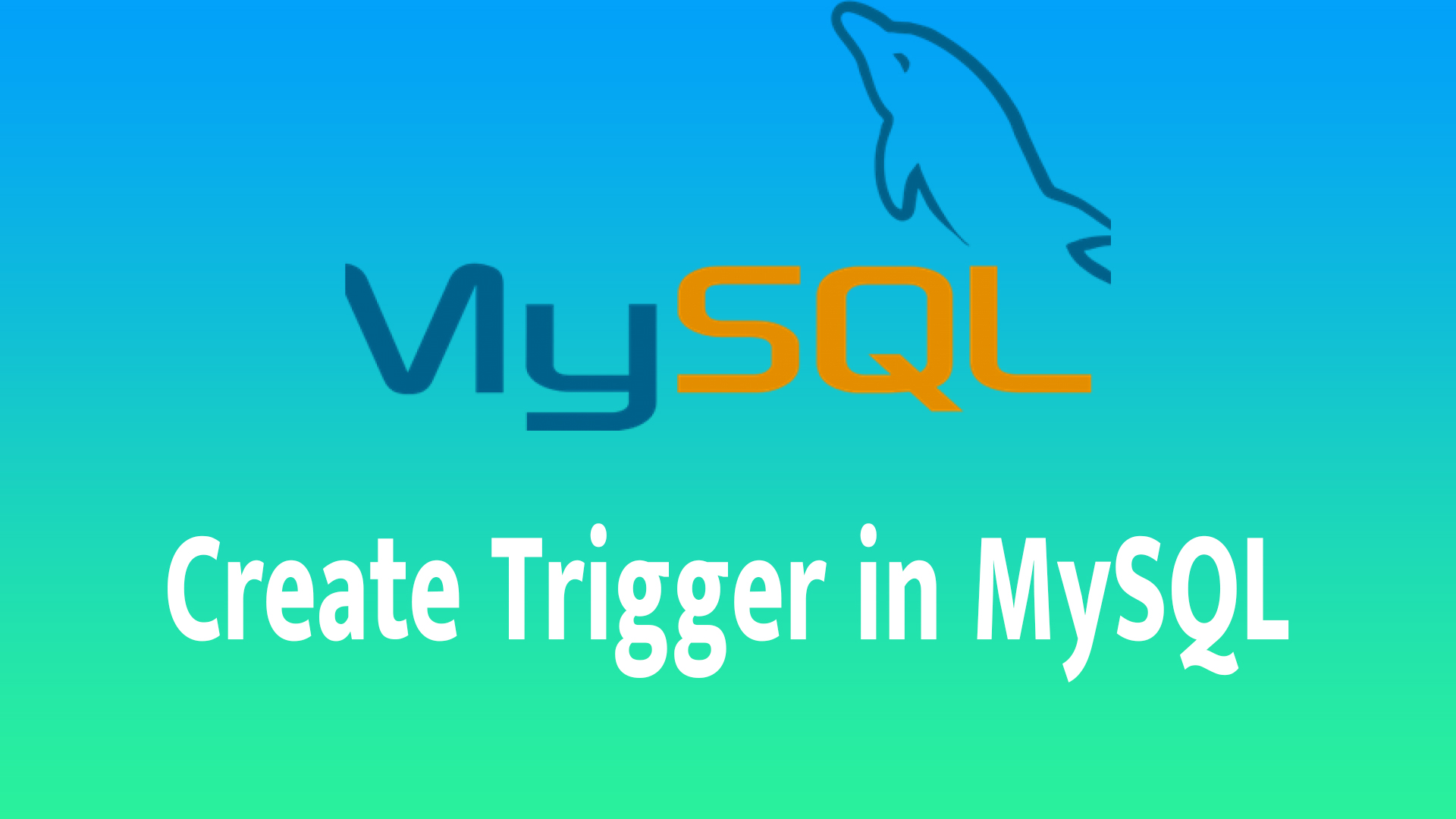Creating a Trigger in MySQL
A Trigger in MySQL is a special type of stored program that automatically executes in response to INSERT, UPDATE, or DELETE operations on a table.
1. Syntax for Creating a Trigger
CREATE TRIGGER trigger_name
{BEFORE | AFTER} {INSERT | UPDATE | DELETE}
ON table_name
FOR EACH ROW
BEGIN
-- SQL statements to execute
END;
trigger_name→ Name of the trigger.BEFORE | AFTER→ Defines whether the trigger fires before or after the event.INSERT | UPDATE | DELETE→ Specifies the event that activates the trigger.table_name→ Table on which the trigger is applied.FOR EACH ROW→ Ensures that the trigger executes for each affected row.
2. Creating a BEFORE INSERT Trigger
📌 Example: Automatically set the created_at timestamp when inserting a new employee.
CREATE TRIGGER before_employee_insert
BEFORE INSERT ON employees
FOR EACH ROW
BEGIN
SET NEW.created_at = NOW();
END;
✔ Explanation:
- Before a new row is inserted into
employees, thecreated_atcolumn is set to the current timestamp (NOW()). NEWrefers to the new row being inserted.
3. Creating an AFTER INSERT Trigger
📌 Example: Log inserted employees into an employee_audit table
CREATE TRIGGER after_employee_insert
AFTER INSERT ON employees
FOR EACH ROW
BEGIN
INSERT INTO employee_audit(employee_id, action, action_date)
VALUES (NEW.employee_id, 'INSERT', NOW());
END;
✔ Explanation:
- After a new employee is inserted into
employees, an audit log is recorded.
4. Creating an AFTER UPDATE Trigger
📌 Example: Log salary changes for employees
CREATE TRIGGER after_employee_update
AFTER UPDATE ON employees
FOR EACH ROW
BEGIN
INSERT INTO salary_changes(employee_id, old_salary, new_salary, change_date)
VALUES (OLD.employee_id, OLD.salary, NEW.salary, NOW());
END;
✔ Explanation:
- When the the
salarycolumn is updated inemployees, the old and new salary values are logged. OLD.salaryrefers to the previous salary, andNEW.salaryrefers to the updated salary.
5. Creating a BEFORE DELETE Trigger
📌 Example: Prevent deletion of employees with admin role
CREATE TRIGGER before_employee_delete
BEFORE DELETE ON employees
FOR EACH ROW
BEGIN
IF OLD.role = 'admin' THEN
SIGNAL SQLSTATE '45000'
SET MESSAGE_TEXT = 'Cannot delete admin employees!';
END IF;
END;
✔ Explanation:
- If an employee has the role 'admin', deletion is prevented using SIGNAL to raise an error.
6. Viewing Triggers
📌 List all triggers in the database
SHOW TRIGGERS;
📌 View a specific trigger
SHOW CREATE TRIGGER after_employee_insert;
7. Dropping a Trigger
📌 Remove a specific trigger
DROP TRIGGER IF EXISTS after_employee_insert;
8. Summary
✔ Triggers automate database tasks based on events (INSERT, UPDATE, DELETE).
✔ Use BEFORE triggers to modify data before an operation.
✔ Use AFTER triggers to log changes or take additional actions.
✔ Use SHOW TRIGGERS; to list existing triggers.
✔ Use DROP TRIGGER trigger_name; to remove a trigger.
Would you like a trigger customized for your database? 🚀

